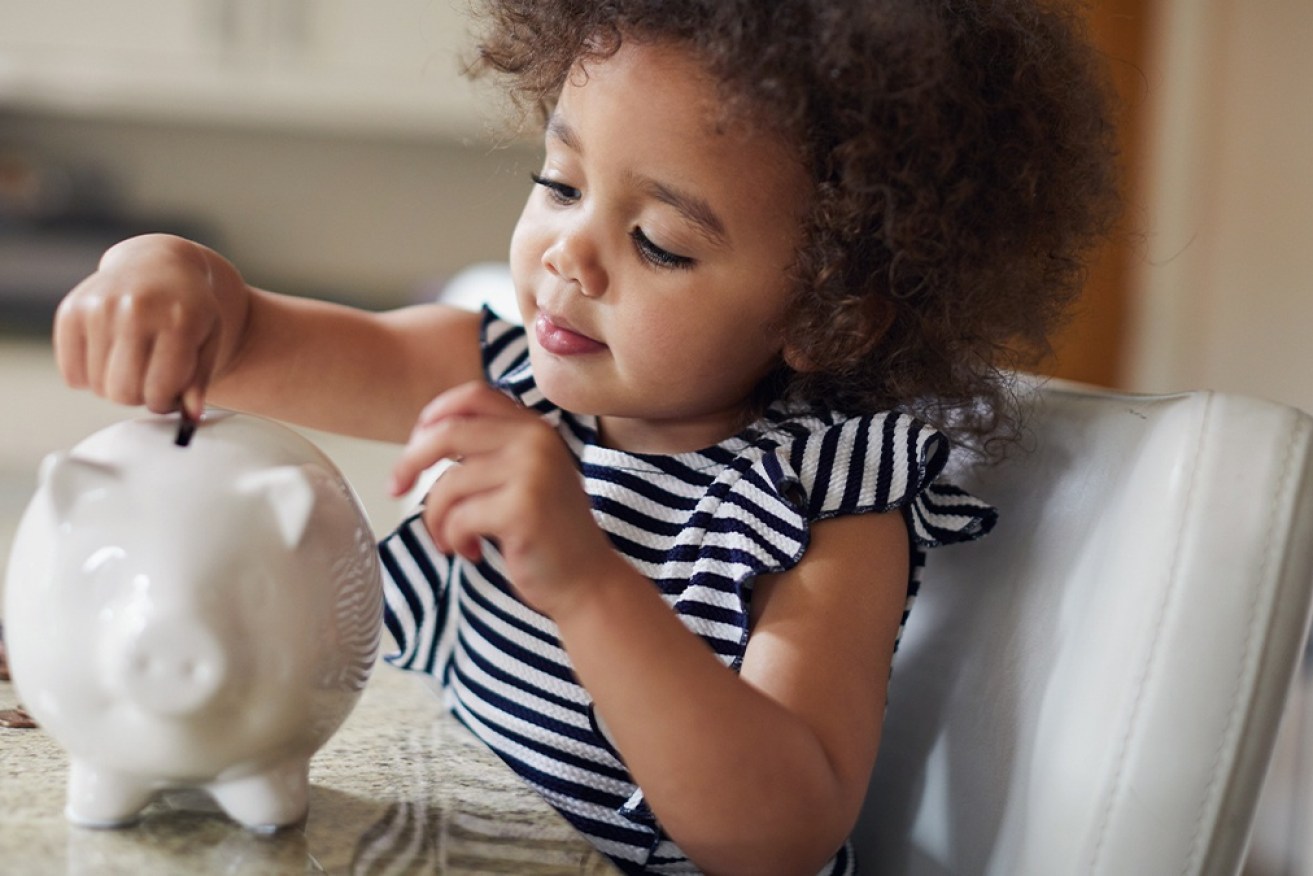Four tips to pick the best savings account for your child


Involving your young children in financial decision-making could improve their financial literacy as adults. Photo: Getty
The rising cost of living means it’s more important than ever to choose the right bank account to earn interest on your savings – and this applies to your kids as well.
RateCity research director Sally Tindall said setting up a savings account for your child not only helps to secure their financial future but also teaches them how to manage their money.
But finding the best account is no mean feat – banks impose terms and conditions that can sometimes offset the benefits of a higher interest rate.
Here are four tips to find the best bank for you.
1. Read the fine print
RateCity tested kids’ savings accounts by calculating how much interest would be earned if you opened an account on your child’s first birthday and deposited $20 per week until the day before their 13th birthday.
The results showed accounts with higher interest rates didn’t necessarily lead to higher returns, once various terms and conditions were factored in.
These can include deposit and withdrawal requirements, rate caps, age limits, and how often the interest will be paid.
Ms Tindall said parents should familiarise themselves with these terms, rather than automatically going for the highest advertised interest rate.
“You can find all sorts of traps buried deep within the fine print that can catch not only kids out, but also adults trying to help them navigate,” Ms Tindall said.
“In fact, sitting down and reading through the terms and conditions with your child is a great activity to teach them the importance of fine print.”
2. Plan your saving
Some banks require you to make regular deposits of a certain amount and impose a limit on how many times you can withdraw money.
For example, the Young Saver account from People’s Choice requires you to make deposits of at least $5 per month while making no withdrawals to receive the maximum interest rate.
“There’s no point in picking a savings account that offers a maximum rate but only if you make regular regular deposits, when you’re only planning to put money in at Christmas,” Ms Tindall said.
3. Watch out for rate caps
You might be keen to save as much money as possible for your child, but if you choose the wrong savings account, there is such a thing as saving too much.
Although many savings accounts allow you to save as much as you want without affecting the interest rate paid, some have caps on how much money you can have in the account to receive the maximum rate.
For example, Australian Unity’s Kids Saver account offers a 2 per cent interest rate, but once the balance hits $20,000 it drops to 1 per cent.
4. Stay active
Lastly, Ms Tindall said parents shouldn’t adopt a set-and-forget approach to savings accounts.
She said parents should involve their children in comparing products regularly (every six months) to see if better options have hit the market, noting that this would be a “fantastic lesson” in shopping around for when your child eventually needs to find their own bank account.
This practice will become particularly important once the Reserve Bank of Australia starts hiking the cash rate.
Although the RBA’s rate hike will squeeze the budgets of home buyers and mortgage holders, Ms Tindall said it spelled good news for savers who could expect higher interest rate returns on their savings.
“Hopefully [savers] will see that savings rates pick off the floor, but it’s really important to be vigilant about what your bank passes on because I can’t imagine that all banks will pass on these cash rate hikes evenly and equally,” Ms Tindall said.
“It’s really important, when these interest rate hikes do come, for you to stay on your toes and review your account to make sure you’re still getting a decent rate of interest.”








